Density and Buoyancy: Definitions and units
Listen to this reading
Did you know that submarines submerge and resurface by changing their density? Density explains why large metal ships can float and why oil and vinegar separate into layers. Density has also been used to solve crimes: around 250 BCE Archimedes used the concept to reveal that a craftsman defrauded the king by replacing gold in his crown with silver.
Sometime around 250 BCE, the Greek mathematician Archimedes was given the task of determining whether a craftsman had defrauded the King of Syracuse by replacing some of the gold in the King's crown with silver. Archimedes thought about the problem while relaxing in a bathing pool. As he entered the pool, he noticed that water spilled over the sides of the pool. Archimedes had a moment of epiphany. He realized that the amount of water that spilled was equal in volume to the space that his body occupied. This fact suddenly provided him with a method for differentiating a mixed silver and gold crown from a pure gold crown. Because a measure of silver occupies more space than an equivalent measure of gold, Archimedes placed the craftsman's crown and a pure gold crown of equivalent mass in two tubs of water. He found that more water spilled over the sides of the tub when the craftsman's crown was submerged. It turned out that the craftsman had been defrauding the King! Legend has it that Archimedes was so excited about his discovery that he ran naked through the streets of Sicily shouting "Eureka! Eureka!" (the Greek word for "I have found it!").
What is density?
Archimedes had used the concept of density to expose the fraud. Density is a physical property of matter that expresses a relationship of mass to volume. The more mass an object contains in a given space, the more dense it is. It is important to remember, though, that this relationship is not just about how closely packed together the atoms of an element or the molecules of a compound are. Density is also affected by the atomic mass of an element or compound. Since different substances have different densities, density measurements are a useful means for identifying substances.
For example, how could you distinguish a metric ton of feathers versus a metric ton of bricks, shown in Figure 1, if you could not see them?
Figure 1: Bricks and feathers.
image ©Public DomainOne metric ton of either feathers or bricks will have an identical mass of 1,000 kilograms (one metric ton). However, a metric ton of feathers will occupy a volume of almost 400 million cm3 (about the size of four tractor trailer trucks), while a metric ton of bricks will occupy only one-half million cm3 (about the size of a large-screen TV). The bricks are denser than the feathers because their mass is packed into a smaller volume. This relationship between the mass and volume of a substance is what defines the physical property of density:
Density = Mass/Volume
Density is defined as the ratio of an object's mass to its volume, as shown in the equation above. Because it is a ratio, the density of a material remains the same without regard to how much of that material is present. Density is therefore called an intensive property of matter. Mass is the amount of matter contained in an object and is commonly measured in units of grams (g). Volume is the amount of space taken up by a quantity of matter and is commonly expressed in cubic centimeters (cm3) or in milliliters (ml) (1cm3 = 1 ml). Therefore, common units used to express density are grams per milliliters (g/ml) and grams per cubic centimeter (g/cm3).
Let's look at an example. A typical brick has a mass of 2,268 g and occupies a volume of 1,230 cm3. Using the equation above, we can calculate the density of the brick:
Densitybrick = Massbrick/Volumebrick
Densitybrick = 2,268 g/1,230 cm3
Densitybrick = 1.84 g/cm3
Density can sometimes be confused in our minds with weight because the denser of two equal-volume objects will be heavier. Remember, though, that it is the relationship between mass and volume that determines density and not volume or mass alone, or even how closely packed the atoms or molecules are. Look at Table 1 for examples of the density of common substances.
Density of Some Common Substances
| Substance | Density (\(\frac{g}{cm^3})\) | |
|---|---|---|
| Air | 0.0013 |  |
| Feathers | 0.0025 |  |
| Pine | 0.5 | 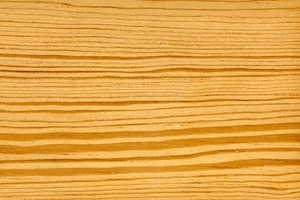 |
| Ice | 0.92 |  |
| Water | 1.00 |  |
| Bricks | 1.84 | 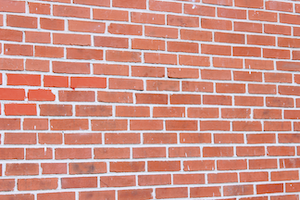 |
| Aluminum | 2.70 | 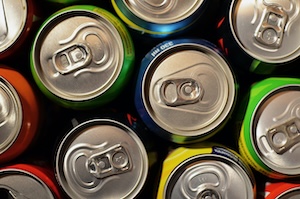 |
| Steel | 7.80 | 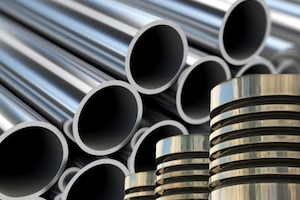 |
| Silver | 10.50 | 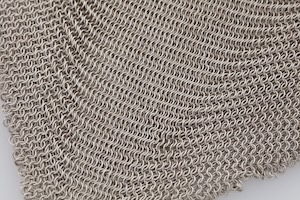 |
| Gold | 19.30 |  |
Comprehension Checkpoint
Buoyancy
When Archimedes stepped into his bathing pool, not only did he realize that water spilled over the edges, but he also observed something that we all notice when we go swimming – he felt lighter. The ability of an object to "float" when it is placed in a fluid is called buoyant force, and is related to density. If an object is less dense than the fluid in which it is placed, it will float. If it is more dense than the fluid, it will sink.
This concept explains why some objects float on water while others sink. For example, most types of wood float on water because they are less dense; steel, by comparison, sinks because it is denser than water. How, then, can large steel cruise ships stay afloat? Large ships have a tremendous amount of space in them that is filled with air (think about it: cabins, movie theaters, onboard casinos, etc.). While steel is denser than water, air is a lot less dense than water (see Table 1). Metal ships can float because their total density – steel plus air – is less than that of the water that they float on. When the metal hull of a ship is breached, like when the Titanic struck an iceberg, water rushes in and replaces the air in the ship's hull. As a result, the total density of the ship changes and causes the ship to sink.
The concept of changing density is commonly employed in another type of vessel, a submarine. A submarine has a constant volume but it can vary its mass by taking in water into its ballast tanks. When water is taken into the ballast tanks, the mass (and thus density) of the submarine increases and the submarine attains negative buoyancy that allows it to submerge into the ocean depths. Conversely, when water is released from the ballast tanks the vessel's density decreases allowing it to surface.
Mixing materials of different densities has predictable results. Have you ever noticed what happens to a bottle of oil and vinegar salad dressing when it is allowed to sit still after it has been shaken? The oil will rise to the top and the vinegar will settle to the bottom of the bottle. This happens because oil is less dense than vinegar. When materials of different densities are put in contact with one another, their relative densities will determine how they order themselves. This phenomenon, where materials layer themselves according to their density, is called superposition.
Comprehension Checkpoint
Density and other intensive properties
The density of a material is strongly connected to other intensive properties, particularly temperature (see our Temperature module). Many materials expand when they are heated. Because a material that expands takes up a larger volume, its density decreases. This phenomenon occurs in all forms of matter: for example, solids, liquids, and gases. The tightly coupled relationship between density and temperature explains how hot air balloons work. When the air inside of a balloon is heated it expands and its density decreases. The balloon thus gains positive buoyancy with respect to the colder air surrounding it, and it floats into the sky.
Density is a fundamental physical property of matter. It is commonly used as a means of categorizing and identifying different materials. In addition, a thorough understanding of the concept of density is critical for building ships and lighter-than-air craft such as hot air balloons.